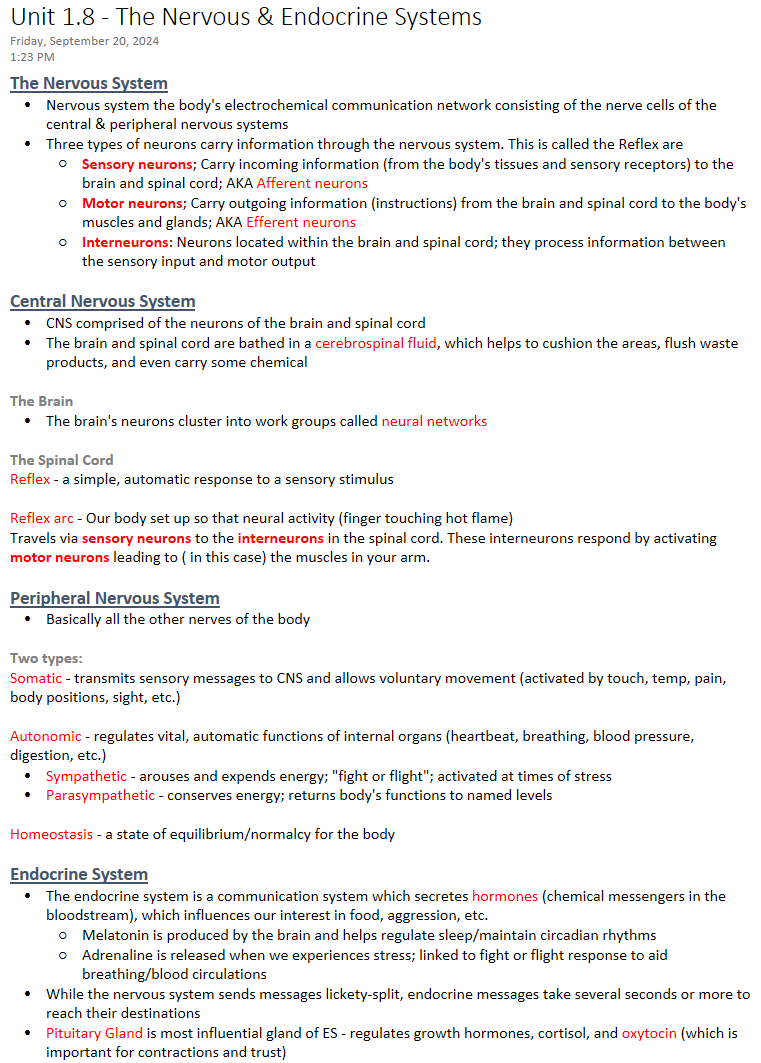Unit 1.8 - The Nervous & Endocrine Systems
The Nervous System
Nervous system the body's electrochemical communication network consisting of the nerve cells of the central & peripheral nervous systems
Three types of neurons carry information through the nervous system. This is called the Reflex are
Sensory neurons; Carry incoming information (from the body's tissues and sensory receptors) to the brain and spinal cord; AKA Afferent neurons
Motor neurons; Carry outgoing information (instructions) from the brain and spinal cord to the body's muscles and glands; AKA Efferent neurons
Interneurons: Neurons located within the brain and spinal cord; they process information between the sensory input and motor output
Central Nervous System
CNS comprised of the neurons of the brain and spinal cord
The brain and spinal cord are bathed in a cerebrospinal fluid, which helps to cushion the areas, flush waste products, and even carry some chemical
The Brain
The brain's neurons cluster into work groups called neural networks
The Spinal Cord
Reflex - a simple, automatic response to a sensory stimulus
Reflex arc - Our body set up so that neural activity (finger touching hot flame)
Travels via sensory neurons to the interneurons in the spinal cord. These interneurons respond by activating motor neurons leading to ( in this case) the muscles in your arm.
Peripheral Nervous System
Basically all the other nerves of the body
Two types:
Somatic - transmits sensory messages to CNS and allows voluntary movement (activated by touch, temp, pain, body positions, sight, etc.)
Autonomic - regulates vital, automatic functions of internal organs (heartbeat, breathing, blood pressure, digestion, etc.)
Sympathetic - arouses and expends energy; "fight or flight"; activated at times of stress
Parasympathetic - conserves energy; returns body's functions to named levels
Homeostasis - a state of equilibrium/normalcy for the body
Endocrine System
The endocrine system is a communication system which secretes hormones (chemical messengers in the bloodstream), which influences our interest in food, aggression, etc.
Melatonin is produced by the brain and helps regulate sleep/maintain circadian rhythms
Adrenaline is released when we experiences stress; linked to fight or flight response to aid breathing/blood circulations
While the nervous system sends messages lickety-split, endocrine messages take several seconds or more to reach their destinations
Pituitary Gland is most influential gland of ES - regulates growth hormones, cortisol, and oxytocin (which is important for contractions and trust)
